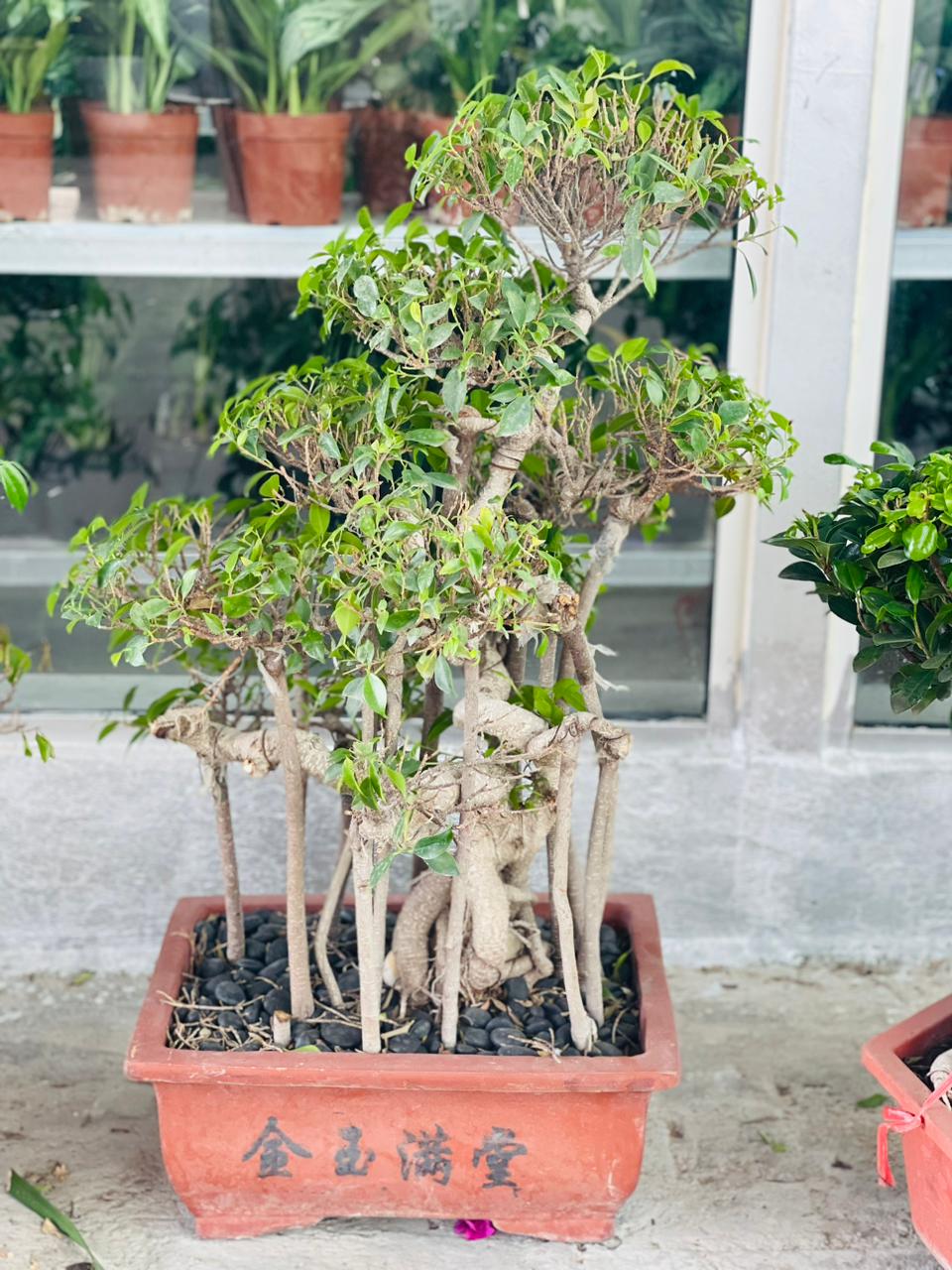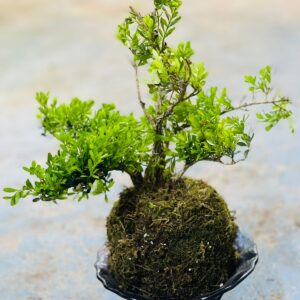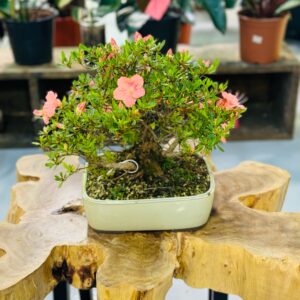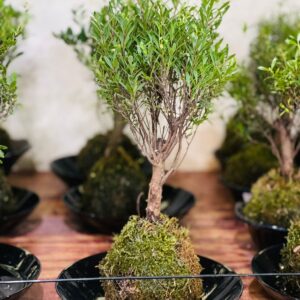Nakornpathom Bonsai #2 refers to bonsai trees that belong to the Ficus genus, which includes various species commonly used for bonsai cultivation. Some popular species of Ficus bonsai include Ficus benjamina (Weeping Fig), Ficus microcarpa (Chinese Banyan or Ginseng Ficus), Ficus retusa (Indian Laurel Fig), and Ficus religiosa (Sacred Fig or Bodhi Tree). Here’s some general information about Ficus bonsai and their care:
Foliage:
Nakornpathom Bonsai #2 trees typically feature glossy, dark green leaves that are oval or elliptical in shape. The size and shape of the leaves vary depending on the specific species.
Trunk and Bark:
The trunks of Nakornpathom Bonsai trees can display various characteristics, including smooth, rough, or peeling bark textures. The trunks may develop interesting patterns and exhibit a range of colors, from light gray to reddish-brown.
Growth Habit:
Nakornpathom Bonsai trees have a natural tendency to grow aerial roots, which can add an interesting visual element to the tree’s overall appearance. They can be trained into different bonsai styles, such as formal upright, informal upright, slanting, or cascade.
Lighting:
Nakornpathom Bonsai trees generally thrive in bright, indirect sunlight. They require several hours of light each day. However, it’s important to protect them from intense, direct sunlight, as it can scorch the leaves. Adjust the lighting conditions based on the specific species and its light requirements.
Temperature and Humidity:
It prefer warm temperatures ranging from 60°F to 85°F (15°C to 29°C). They can tolerate slightly lower temperatures, but it’s important to protect them from frost. They appreciate higher humidity levels, so misting the leaves or using a humidity tray can be beneficial.
Watering:
It require regular watering to keep the soil evenly moist. Water the tree when the top inch (2.5 cm) of soil feels slightly dry. Avoid overwatering or allowing the tree to sit in waterlogged soil, as it can lead to root rot. Ensure thorough watering and allow excess water to drain from the pot.
Pruning and Shaping:
Regular pruning is necessary to maintain the shape and size of Nakornpathom Bonsai trees. They respond well to pruning and can be trained with wiring techniques. Prune back new growth to encourage branching and density. Use caution when wiring to avoid damaging the branches or bark.
Fertilization:
Fertilize your trees during the growing season, typically from spring to early autumn. Use a balanced, water-soluble bonsai fertilizer according to the package instructions. Adjust the frequency and strength of fertilization based on the tree’s response and the specific product’s recommendations.
Repotting:
Repot your trees every 2-3 years to provide fresh soil and promote healthy root growth. Repotting is typically done in spring before the new growth starts. Trim back the roots and use a well-draining bonsai soil mix suitable for Ficus species.
Remember that specific care requirements may vary depending on the species of tree have. It’s always beneficial to research and understand the specific needs of your tree for optimal care and maintenance.






Reviews
There are no reviews yet.